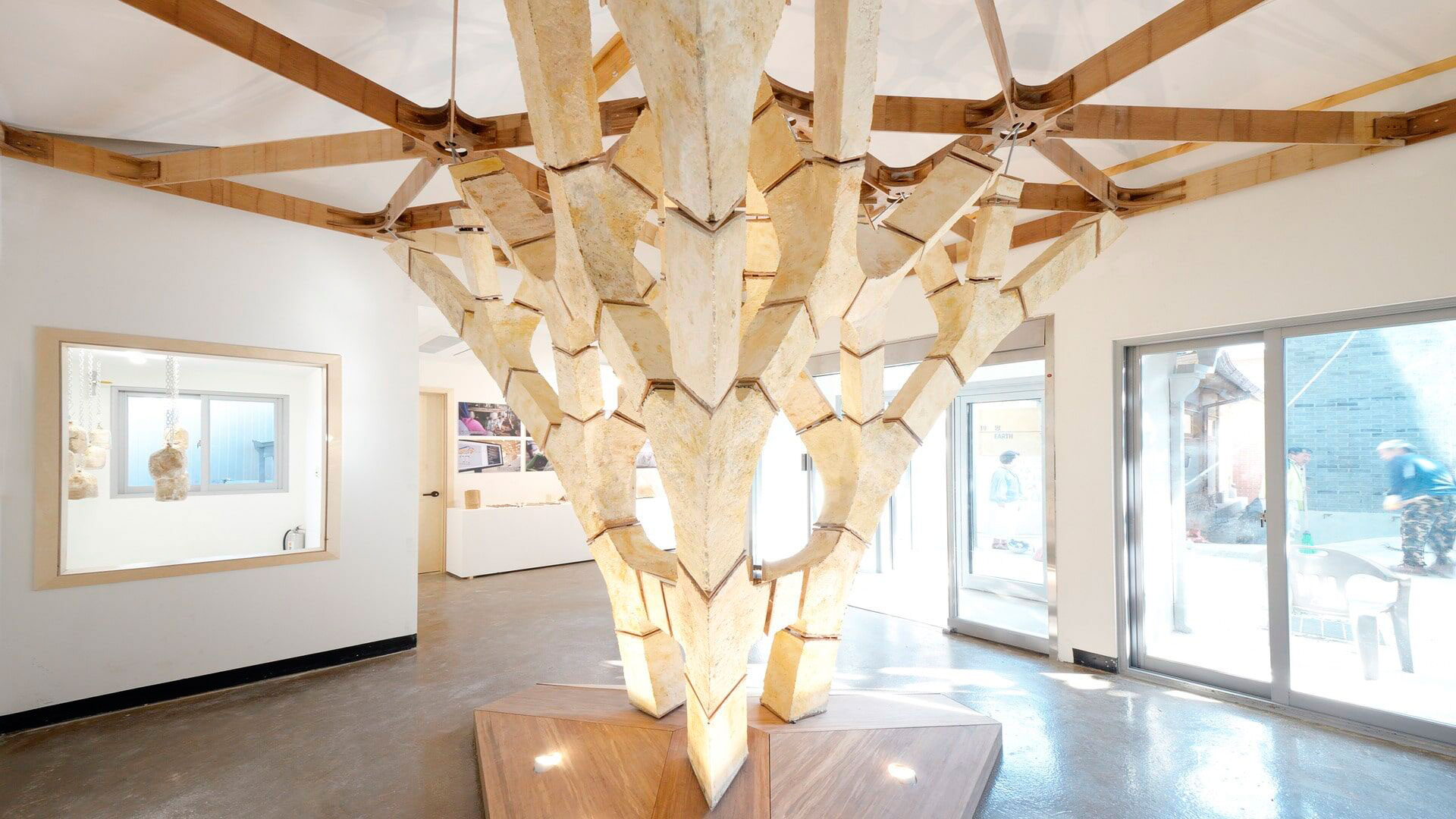Mushroom roots are the new sustainable building material that’s not only mouldable and resistant but also air-purifying and compostable
Mycelium is a super-strong material obtained from mushrooms which has various applications in the construction industry as a substitute for non-sustainable materials. It is 100% organic, can adapt to any shape as it grows, and has air purifying capacity.
Fungi are readily found in many places, but it’s their magic mycelium that are the source of such fascination; the thin root-like fibres that grow out of sight, underground. They are made up of multi-cellular filaments called hyphae, which grow rapidly and function like a neural network beneath the soil to assist fungi’s reproduction, nutrition, and growth. This root system branches off in many directions, forming a complex structure as it grows. The beauty of mycelium is that they can be condensed and made to grow in specific shapes and spaces and will continue to grow on any surface. This means the mass can be dried into a hard substance suitable for use as a renewable manufacturing and building material.
Mycofabrication or mycotecture is the use of mycelium to generate sustainable building materials for architectural applications. The advantage of mycelium bricks, for example, is that they are both biodegradable and biocontributing. As they decompose, they decompose into nutrients that are useful for the soil and the environment. Because they are living, they can fill and repair cracks, and when dried, they form a material that is stronger than concrete. Mycelium also have water, mould and fire-resistant properties that make them particularly appealing as a building material.
Research is currently underway to learn more about the applications of mycelium as an air purifier. In fact, Brunel Design has come up with Myco-Hex, a wall of modular, hexagonal tiles that fit together like the cells of a honeycomb that are principally made with mycelium. It is designed to hoover up harmful hydrocarbon pollution particles suspended in the air. As it grows, it is capable of breaking down up to 80% of the carbon dioxide it absorbs, a quality that has already been proven when used in the clean-up of oil spills in the Niger Delta.







